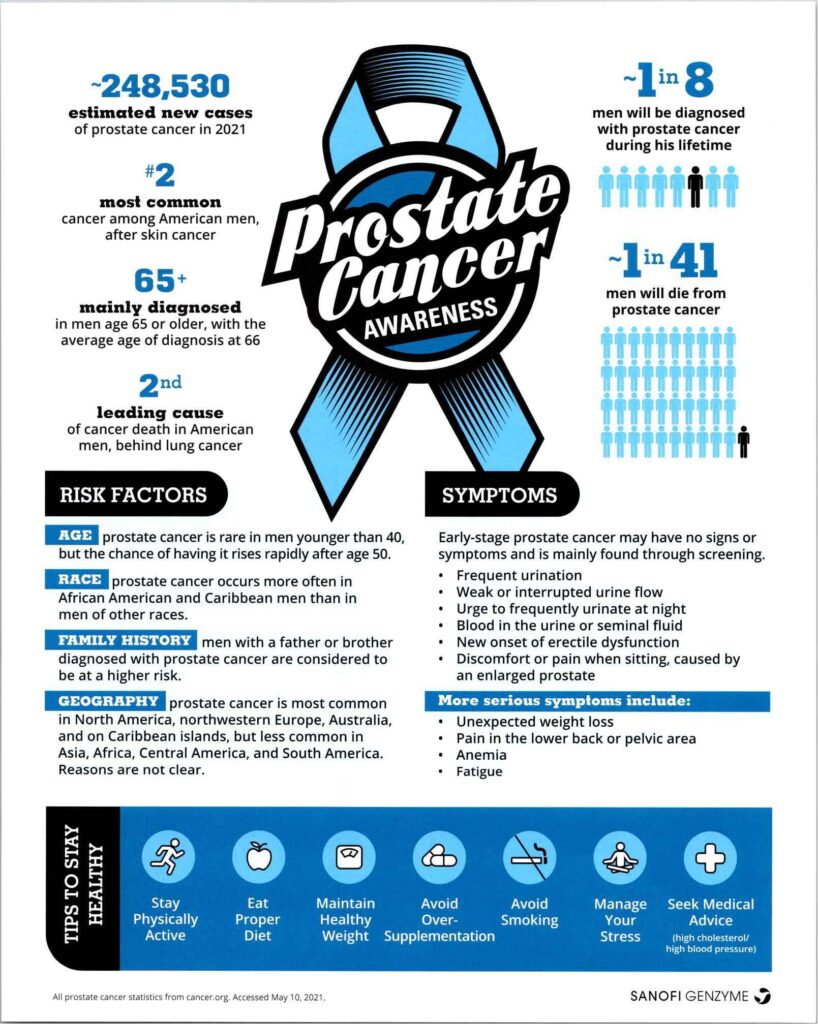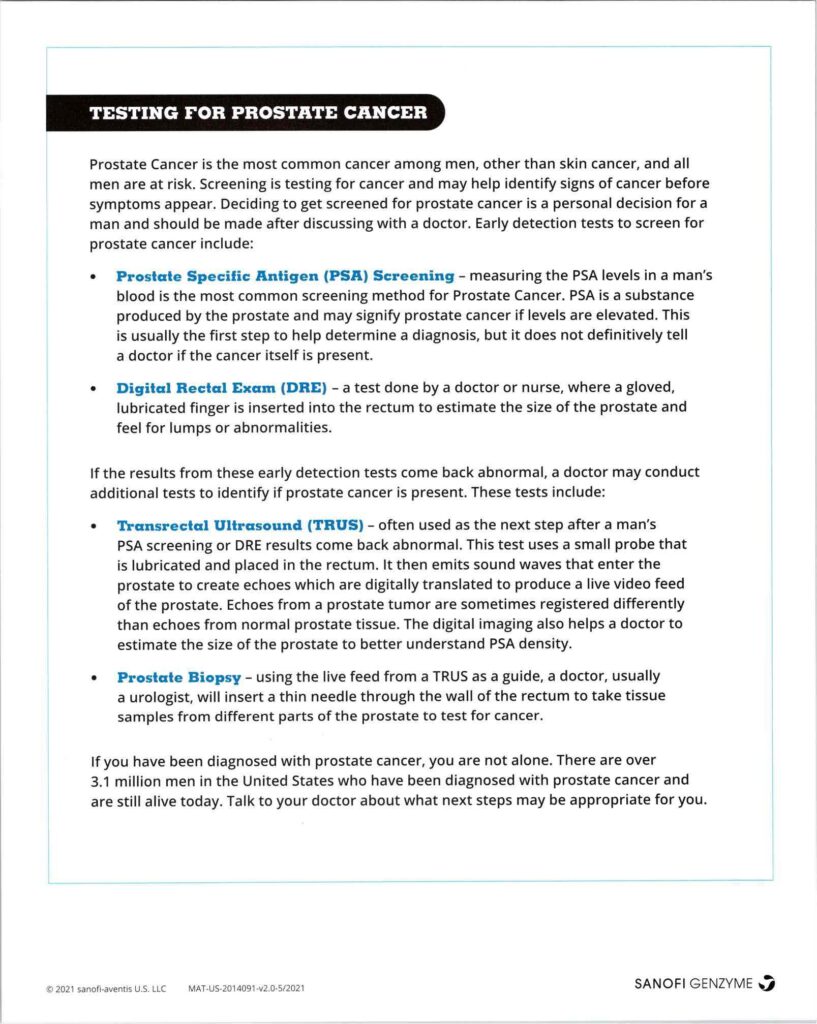Prostate Cancer Awareness Month: Some Numbers That Hit Close to Home
Hey folks,
As we wrapped up Prostate Cancer Awareness Month, I got my hands on a flyer that makes you think. It states that 1 in 8 men will develop prostate cancer in their lifetime, but only 1 in 41 will die from it.
On the surface, those odds might sound good. But here’s the real talk: Even one death is too many, especially when it could be someone you love.
The 1 in 41 statistic translates to about 2.5% of men diagnosed with prostate cancer ultimately dying from it. In simpler terms, that’s still too darn high.
Let’s keep the conversation going, folks. Early detection is key, and trust me, you’d rather face a prostate exam than the alternative.
Take care and stay healthy!

Debunking Prostate Cancer Screening Myths: It’s Easier (and Safer) Than You Think
There’s a lot of confusion and, let’s face it, fear, about what happens after you get an abnormal PSA test. No one wants to join the “my plumbing doesn’t work like it used to” club. But guess what? Things have changed, and for the better.
First off, PSA is just a simple blood test. Easy peasy. The real concern kicks in when the results are off. But here’s the good news: Our approach to screening has evolved. We’ve got almost risk-free and pain-free ways to detect prostate cancer now. So, no more horror stories.
Radiation? Less scary than it sounds. Advancements in pre-radiation planning are significantly reducing collateral damage to the bladder and rectum.
And surgery? We’ve come so far that it’s now an outpatient procedure. Most men are back to their daily routine in about 10 to 30 days. That’s less time than it takes some people to pick a Netflix series!
So, let’s clear the air and get those check-ups. Better safe than sorry, right?
Take care, and keep those engines running smoothly.
